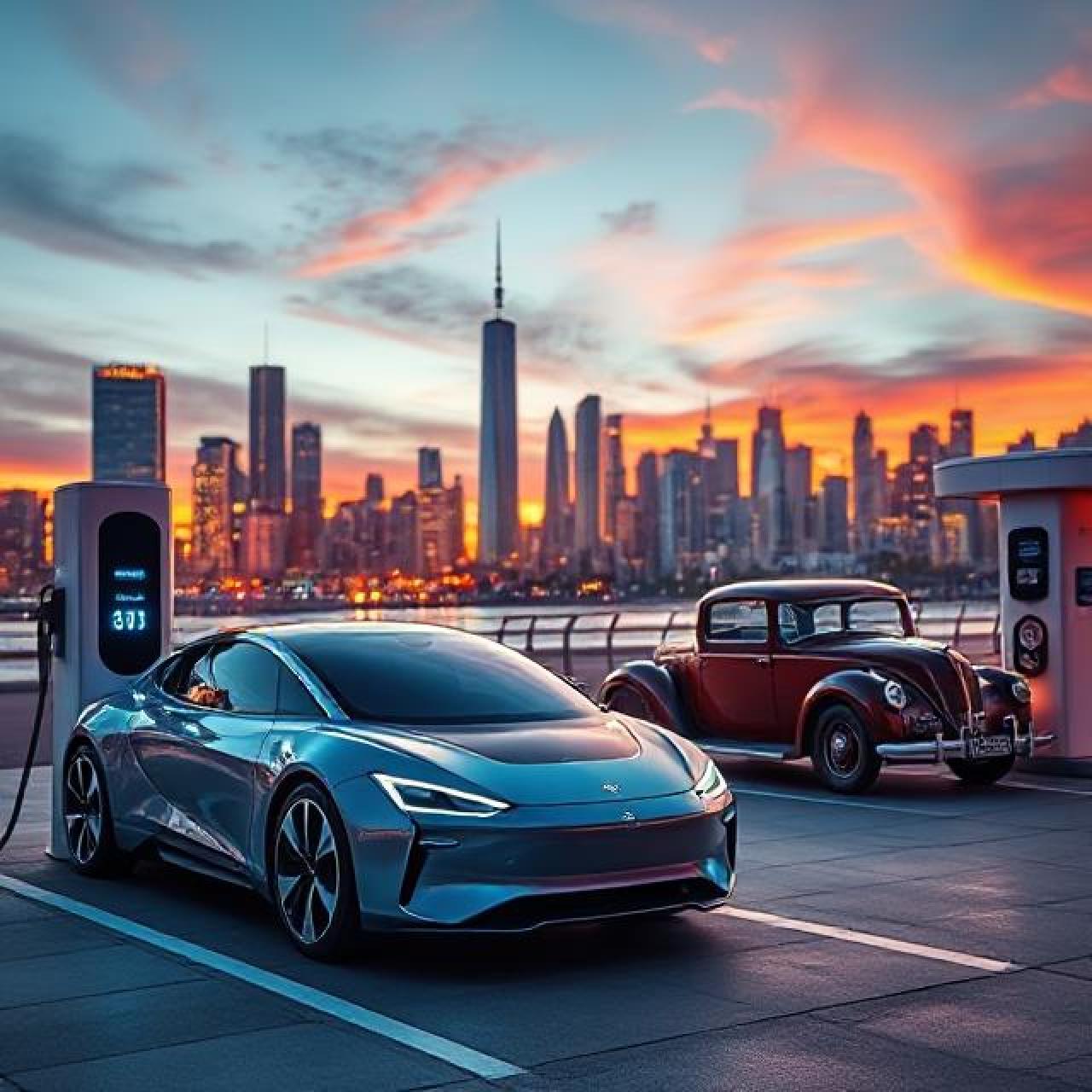Electric Vehicles vs. Gasoline Cars: Navigating the Future of Transportation
- 12 Sep 2025
- 74
- Electric Vehicles , EV Sales Ireland
Electric Vehicles vs. Gasoline Cars: Navigating the Future of Transportation
Choosing the right vehicle in a rapidly evolving automotive landscape requires understanding the key differences between electric and traditional gasoline-powered cars. This guide explores performance, costs, environmental impact, infrastructure, and future trends, supported by recent research, to help you make an informed decision.
In recent years, the automotive industry has experienced a significant shift toward electric mobility. Consumers now face an important choice: should they invest in an electric vehicle (EV) or stick with the familiar gasoline-powered car? Making this decision involves weighing multiple factors, including performance, cost, environmental considerations, and practicality.
Performance and Driving Experience
Electric vehicles are celebrated for their instant torque, which translates into quick acceleration and a smooth, quiet ride. A 2021 study published in the Journal of Transportation Research found that EVs outperform internal combustion engine (ICE) vehicles in acceleration tests, owing to their immediate torque response. Drivers often find EVs to be highly responsive and enjoyable to operate, especially in urban settings where quick acceleration and maneuverability are valued. Conversely, traditional gasoline cars boast a wide variety of models with diverse performance capabilities. They produce familiar engine sounds and often offer longer driving ranges per tank, making them well-suited for long-distance travel or high-performance applications.
Cost and Maintenance
When it comes to costs, electric vehicles generally require a higher initial investment but tend to be cheaper to maintain over their lifespan. A 2022 study by the Union of Concerned Scientists indicated that EV owners save an average of 40% in maintenance costs over 8 years compared to conventional vehicles, primarily due to fewer moving parts and no oil changes. Their electric motors have fewer moving parts, reducing the need for oil changes, spark plug replacements, and engine repairs. Charging expenses can also be more economical than fuel costs, especially with the increasing availability of home and public charging stations. Conversely, gasoline cars usually come with a lower upfront price but incur ongoing expenses such as fuel, oil, and more frequent repairs. Over time, these costs can add up, making EVs potentially more economical in the long run.
Environmental Impact
Environmental considerations are central to many consumers’ choices. A comprehensive 2020 report by the International Energy Agency (IEA) highlighted that EVs produce zero tailpipe emissions, significantly reducing air pollution and greenhouse gases—especially when charged using renewable energy. The study notes that if the electricity grid becomes greener, the carbon footprint of EVs decreases even further. However, manufacturing EV batteries involves resource extraction and energy use, which can have environmental repercussions. Gasoline vehicles emit carbon dioxide and other pollutants during operation, contributing to climate change and urban air quality issues. Their environmental footprint also includes the extraction, refining, and consumption of fossil fuels, which have long-term ecological impacts.
Infrastructure and Range
The availability of charging infrastructure influences the practicality of electric vehicles. According to a 2023 report by the International Council on Clean Transportation, the global network of EV charging stations has grown by over 40% annually in recent years, but coverage remains uneven, especially in rural areas. Most EVs can travel between 150 and over 300 miles on a single charge, with rapid chargers reducing charging times to approximately 30 minutes. In comparison, gas stations are more widespread, offering quick refueling that suits long-distance travel without extensive planning. This convenience remains a key factor for many consumers considering the switch to electric.
Policy and Future Trends
Government policies worldwide increasingly favor electric vehicles through incentives such as tax credits and rebates. A 2022 report by the Bloomberg New Energy Finance projected that global EV sales could account for over 50% of new car sales by 2030, driven by stricter emissions regulations and declining battery costs. Many cities are establishing low-emission zones or planning to phase out sales of internal combustion engine vehicles altogether within the next decade. This regulatory environment encourages consumers to consider EVs as a sustainable alternative. Although gasoline-powered cars will continue to be available for the foreseeable future, their dominance is waning as technological innovations, environmental concerns, and policy measures accelerate the shift toward electric mobility.
Making the Right Choice
Ultimately, selecting between an electric vehicle and a gasoline car depends on individual priorities. If environmental impact, lower long-term costs, and cutting-edge technology appeal to you, EVs offer a compelling option. Recent studies show that EVs can significantly reduce greenhouse gas emissions, especially when integrated with cleaner energy sources. However, if long-range capability, quick refueling, or budget constraints are more important, traditional gasoline cars may still meet your needs. As technology advances and infrastructure improves—as supported by ongoing research—the transition to electric vehicles is expected to accelerate, paving the way for a more sustainable future in transportation





